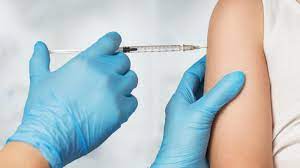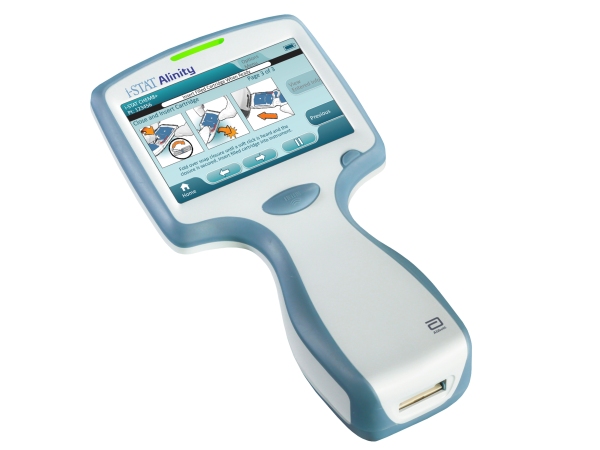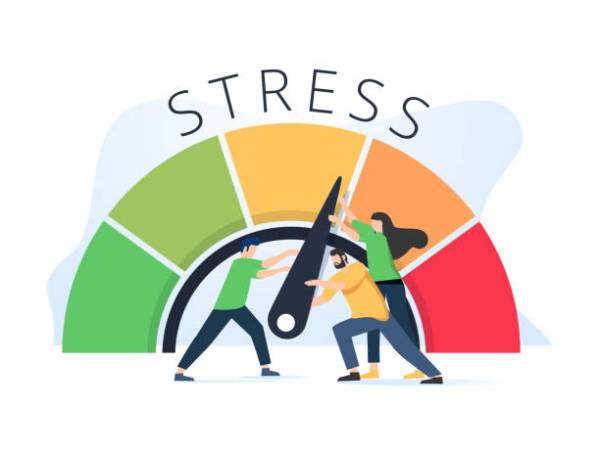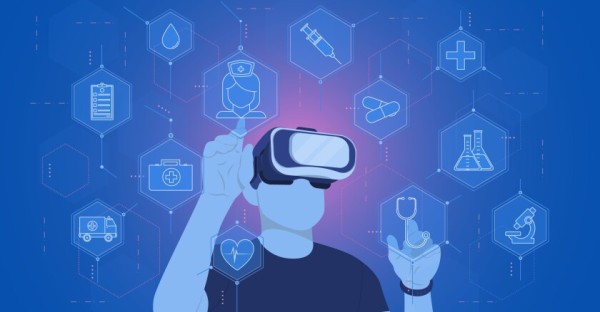Update: Have a TBI? Find out anytime, anyplace.
Researching for TBI-related news today brought me to an article that was just released hours ago and focused on a topic I previously posted about in 2017: “The DoD has granted $11.3 million to Abbott Laboratories for the development of a mobile device that allows one to determine if they have a traumatic brain injury, anytime and anyplace.” The portable blood test, which should be administered within 12 hours of potential brain injury, detects certain biomarkers in the blood that indicate a brain injury. In March 2023, the U.S. Food & Drug Administration finally approved the Abbott’s Alinity i laboratory device for commercial use. Soon, it appears, this blood test will be available to athletes, soldiers, and others at medical centers throughout the country.
Update: Carl-Gustaf Rifle
“What kind of damage is that doing to soldiers in training and on the battlefields?” Over five years ago, I reported this statement, pronounced by a member of the Congressional Brain Injury Task Force regarding the heavy weapon Carl-Gustaf rifle. Before 2017, the federal government knew the risks of the weapon. The Department of Defense even launched a five-year study to evaluate this risk. I personally thought, based on later articles, that currently, there were laws preventing troops from using the Carl-Gustaf system. However, “U.S. Troops Still Train on Weapons with Known Risk of Brain Injury,” headlined an article in the New York Times yesterday, November 26, 2023. The article is a good reminder of the peril our troops face in war, not just from opponents, but in training and defending our country and allies across the world.
Great Advocate Passes Away: Rosalynn Carter
Less than a week ago, America lost not only its oldest former First Lady, but also a prominent advocate for the mentally ill. Rosalynn Carter was 96 when she passed at her and her husband’s home in Georgia. From the time of President Jimmy Carter’s first run for Governor of Georgia until her death, a timespan of over 50 years, she worked to better the treatment of and end the stigma against mental illness.
Although the definition goes beyond this, the National Institute of Health, in 2022, stated, “Traumatic brain injury (TBI) is associated with a host of psychiatric and neurobehavioral problems.” While, traditionally, a traumatic brain injury is considered to be a separate entity from mental illness, the possible symptoms are similar, if not identical. Ms. Carter likely considered it so, as speaking about her advocacy, she has mentioned visiting facilities/institutions that housed troops who suffered from PTSD and TBI. In a discussion at the JFK Library, she noted a Columbia University study that stated that 85% of Americans consider mental illness to be a neurological illness. If nothing else, traumatic brain injury is a neurological illness.
As President, Jimmy Carter enacted the greatest overhaul of the mental health system in America to date. The next major expansion of the system was enacted in 2002, by President George W. Bush. Ms. Carter has only positive statements about this action, as she put cause above party. In 1987, Ms. Carter founded the Rosalynn Carter Institute for Caregivers, saying, “Those giving care often do so at a great personal sacrifice of time, energy, and income… So many people giving care to their loved ones feel isolated, inadequate, despairing. At a time when more and more Americans are called to give care, it is critically important that we do all we can to support caregivers.” Recently, in May 2023, it was revealed that Ms. Carter was suffering from dementia.
The private funeral for Ms. Carter will be held on Monday, November 27th in Plains, Georgia. Her husband of more than 77 years, who is receiving home hospice care, will be in attendance, as will her children, grandchildren and great-grandchildren. Americans should remember Rosalynn Carter, not only for her time as First Lady, but for her advocacy for mental illness, including traumatic brain injury, and their caregivers. (“In lieu of flowers, the Carter family is requesting that those interested consider contributing to the Carter Center’s Mental Health Program or the Rosalynn Carter Institute for Caregivers.”)
Excuse or Legitimate Condition? Time Blindness after TBI
If a family member told you that they may be late for your wedding because they suffer from time blindness, I believe that many people would scoff. If you were chronically late for work for the same reason, you would likely be fired. If you were consistently tardy for school, you would definitely get detention. It seems like time blindness may be an easy excuse for a failure to wake when an alarm clock goes off, but people on TikTok and other social media sites are taking it seriously. This tendency to over or underestimate the time needed for a particular activity has even been studied by the government, well before these posts. But how legitimate is the condition and, though it is often seen as a symptom of ADHD, does it also affect those a brain injury?
Time blindness, medically termed chronotaraxis, is associated with the brain functions controlled by the thalamus, which is located near the center of the brain. The thalamus plays an key role in many human functions, including memory, emotions, the sleep-wake cycle, executive functions, mediating general cortical alerting responses, processing of sensory (including taste, somatosensory, visual, and auditory) information and relaying it to the cortex, and sensorimotor control. While thalamic strokes, a brain injury, are not rare, chronotaraxis following such a stroke is uncommon – affecting only 5 of 120 subjects, or 4 percent, of people in a particular study. (While this NIH study was published over 15 years ago, in 2007, the results coincide with more recent results.)
In 2013, the National Institute of Health reported on another study that studied stroke and other types of brain injury and found that this time issue goes beyond the effect of a stroke and is related to the consequences of traumatic and other brain injuries. “We concluded that while timing variability in TBI patients is not consequent to dysfunctions at the clock stage, but rather related to attentional, working memory and executive functions disorders, medial temporal lobe damage affects the memory component, and possibly the downstream decision-making stage, of the temporal information processing model.” Unfortunately, issues with mental executive functions are hugely affected by both acquired and traumatic brain injuries.
More recently, just this summer, USA Today reported on time blindless, focusing on its effect on those who also suffer from ADHD. However, they also highlight other personal issues that can have this effect, specifying noted that time management is controlled by the frontal lobe of the brain, an area that is often affected when one has a brain injury. (This, of course, seems to go against the above-mentioned study that points to the medial temporal lobe of the brain as the source of time blindness, as well as a 2020 report that refers to it as an underestimated right hemisphere syndrome.)
Personally, I can relate to the symptoms of time blindness. Well before my brain injury, I tended to underestimate time requirements for various activities, from homework to travel. Both before and after my brain injury, would I, and others with brain injuries, be helped by a system that considered/recognized “time blindness” as an impairment, or would it just delay the start/end of whatever task caused the tardiness? I’m somewhat skeptical, though the results cannot be denied. Perhaps more academic research must be done to understand the possible difference between poor time management skills and a medical deficit, related to time. Or, maybe rehabilitation programs and those with brain injuries need to spend more time on strategies to overcome any time deficits that result from damage to the brain.
NIH Finds Stressful Days Ahead
“Early-life stress* changes more genes in brain than a head injury,” posted The Ohio State University just this past weekend. This headline captured my interest and required me to research more. Ultimately, I found the claim to be both true and in need of clarification. Below I discuss research that further explains the findings:
The Ohio State University conducted an animal study with young rats, separating them into four different categories: stress alone, head injury alone, stress combined with head injury and neither stress nor head injury. Without getting into the intricacies of the study, the key seems to relate to errant signaling of oxytocin. (According to the National Institute of Health, oxytocin is a hormone that is related to maternal behavior and social bonding.) Stress and stress combined with head injury resulted in maladaptivity, but head injury alone did not have this effect. The result of this maladaptive signaling resulted in young rats being less risk avert, specifically because they voyaged out without companion rats, which they consider a negative. Depending on the level of risk, I see this as a positive, as humans, particularly younger people, are told to “face their fears.”
In 2022, the NIH submitted a report that stated the obvious: “Taken together it is apparent that stress appraisal and physiology both prior to and after traumatic brain injuries are key predictors of short- and long-term outcomes.” In another 2022 NIH study, it was found that, “stress often aggravates oxidative stress, reduces brain antioxidant** capacity… thus, antioxidant drugs can significantly reduce oxidative stress caused by stress and significantly improve brain injuries and diseases.” A Department of Health & Human Survives webpage, though, references the findings of other government studies that seem to contradict this. They acknowledge that, “not all stress is bad.” All studies consider long-term stress to be negative and the page is not specifically related to stress AND brain injury, but the results seem to be relevant to all people.
The similarities, and differences, of brain injury and stress are interesting findings, as I believe the link is already perceived by those affected. One thing that I don’t think the researchers have specifically addressed in their animal studies is that in humans, it’s almost impossible to have a life without any stress, with or without a head injury.
*Early-life stress (ELS) includes: loss of caregiver attachment: divorce/separation, foster care, parental incarceration, lack of attention, racism, separation from parents, exposure to violence: physical, mental and sexual abuse, substance abuse, being over-scheduled, feeling pressured to perform or behave beyond their ability, neglect: emotional and physical neglect, meeting new people, starting a new school, death of a loved one, illness: mental and physical, difficulty with school work, increased pressure/responsibility at home, being bullied (Wikipedia)
** https://www.nccih.nih.gov/health/antioxidant-supplements-what-you-need-to-know
UArizona Visualizes New Detection & Treatment for TBI
The Excellence in Prehospital Injury Care (EPIC) project has led to University of Arizona (UArizona) and various affiliates across the State to research new and varying aspects of brain injury. Looking at the EPIC website, I could find no study report after 2019, and before 2019, there also was a 6-year gap in studies. However, regardless of the operation of the EPIC Project, it is a well-regarded research university. To that end, the Department of Defense recently announced that it has provided millions of dollars in grants to UArizona for new research that will increase knowledge and, hopefully, provide better solutions to identify and treat brain injury.
The most intriguing study, at least for a layman like me, is that of a portable video game to detect brain injury for which the DoD provided $1.5 million in funding. The project, Model Development and Translation of a Virtual Reality Military Operational Neuropsychological Assessment, or VRMONA, involves immersing oneself in a combat-related activity with the use of a VR headset and a hand sensor system. While one plays the immersive game, data is collected about the player’s accuracy, response time, motor coordination and inhibition. The goal is to ready its use for the military, though those connected to the study hope that it can be used in civilian life too, such as in sports, in the future.
Additionally, new treatments for brain injury are always sought after by the government. The University of Arizona Health Sciences was awarded $3 million to study if peptide hormones are an effective treatment for brain injury. In the four-year study, they will be investigating the efficacy of one specific peptide hormone, angiotensin 1-7, in the treatment of brain injury. (The NIH has found that, “Peptide hormones play a prominent role in controlling energy homeostasis and metabolism.”)
Israel-Hamas Attacks Conflict Minds, Damage Brains
The United States of America is full of many calling for a ceasefire for the Israeli-Hamas war (the war is against Hamas, not Palestine, meaning not against the whole population). But, unless a rainbow appears in the Middle East accompanied by a sky full of butterflies, I believe that we must deal with the reality. A war was started by Hamas with the horrific attack of October 7th that killed about 1,400 Israelis, including U.S. citizens. Based on that, for those that vocally express their hope for a ceasefire and want no involvement by the United States, they should remember that Hamas has already embroiled us in the conflict. (As it relates to this blog, there is no confirmed number of how many people in the initial, or follow-up, attacks suffered brain injuries, or any other sort of injury.)
The Times of Israel headlines Something changes in our brain as we react to the traumas on and since Oct. 7. In that article, neuroscientists discuss how an act can have both emotional affects and how it can lead to personally detrimental behavior. (Of course, those who live in Hamas-lead territory also are afflicted, but for the purpose of this post, the focus is America’s Middle East ally, Israel.) Stateside, Hamas propaganda has seeped into the mainstream. Many continue to believe that Israel attacked a Palestinian hospital. Reports by CNN, though, highlight, “U.S., Experts Say Evidence Suggests Palestinian Militants’ Rocket Hit Gaza Hospital”. Unfortunately, the pro-Hamas stories preceding this report that place the blame solely on Israel still circulate online and are believed, by some.
As is evidenced by the many protests you see on college campuses and other locations, Americans have joined the war, at least in mind. Pro-Palestinian and pro-Israeli protests are frequent and often result in violence from those with opposing views. Most, if not all, of the reports I have seen discuss violence against Jewish-Americans. Antisemitism, which I thought and prayed had been eradicated from America many years ago, seems to be alive. One of the best, or rather, the worst example of the effects of this mindset occurred this past weekend. NBC news, and others, reported, “A 69-year-old Jewish man died after suffering a head injury Sunday following an ‘interaction’ with a pro-Palestinian demonstrator during dueling rallies in Southern California.” The police are currently investigating this as a “hate crime”, which is very appropriate.Riots, Reasons & Repercussions: Ongoing Trauma Related to the Floyd Case
You cannot turn on the television now without hearing about the death of George Floyd and the riots and protests that have followed it. Legally, it seems that it was acceptable for Derek Chauvin, the Minneapolis police officer who was in the process of apprehending Floyd, to use a chokehold. Ethically, it was not, particularly after Floyd began saying that he could not breathe. (Lack of oxygen is known as hypoxia and is accompanied with an inability to cough or talk.) Now, it is for a jury to decide if Officer Chauvin acted inappropriately, as he has been charged with second-degree murder.
Whatever comes of this case is irrelevant to this article, as this website focuses on brain injury. Though a well-known enforcement tactic, the chokehold is not often used in the field and is banned in many cities. The result of such an police enforcement action is the oxygen in cut off from the body. A lack of oxygen kills brain cells causing a brain injury. On Friday, June 5, Minneapolis joined the majority of large cities to put a ban on chokeholds. (Unfortunately, it cannot be fully known how this ban has affected the crime rate thus far.)
Following the Floyd incident, though, public outrage has resulted in new traumas. Hatred of the police continues to escalate, resulting in protests, most of which have been peaceful, but also riots, looting and even assaults. These actions have resulted in exactly what the protesters’ aim to eliminate – violence, as there have been assaults on the protesters, police and even bystanders – and has resulted in terrible injury, to the body and brain. For example, it was reported on Tuesday, that a member of the NYPD was charged with 3rd-degree assault and other crimes for pushing a protester to the curb. According to a headline on the WHSV site, “Richmond police won’t say how many officers face discipline for attacking protesters.”
Most of the news appears to be about police officers attacking protesters. Lest it is thought that it is only civilian protesters who face harm, WMAC in Baltimore reported, “Protesters attack police captain marching with them.” In Boston, ABC News noted that the FBI field office, “received credible intelligence that rioters are looking for officers’ home addresses.” In Portland, two teen protesters punched a bystander in the head while he was straightening an American flag.
Those are just a few of the attacks that have occurred in the past few weeks. It the following weeks, it seems that many other anti-police attacks will occur, resulting in harm on all sides. It just should be remembered by everyone that police hatred does not need to mean harm.
For more information:
Today is Brain Injury Awareness Day on Capitol Hill!
March 13th is Brain Injury Awareness Day on Capitol Hill. Today, there will be an awareness fair, a congressional briefing and reception in Washington D.C. While a presentation of these events would be interesting, until that becomes available, it is good to remember that the whole month of March is federally-designated Brain Injury Awareness Month. As was last year, the theme of the month is Change Your Mind about brain injury. Publications have again presented news articles related to brain injury. (Unfortunately, though, these articles just seem to be reiterating statistics about brain injury, that have been presented an enumerable amount of times, in order to showcase the commonality of the issue. However, it is good to remember that for many people, brain injury is still an unknown topic – a topic of no interest to them because it doesn’t affect them personally. However, they need to understand.)
Even if you cannot travel to D.C. for the day’s events, you can still participate. Various websites note what you can do throughout the month to increase awareness and to learn more yourself.










